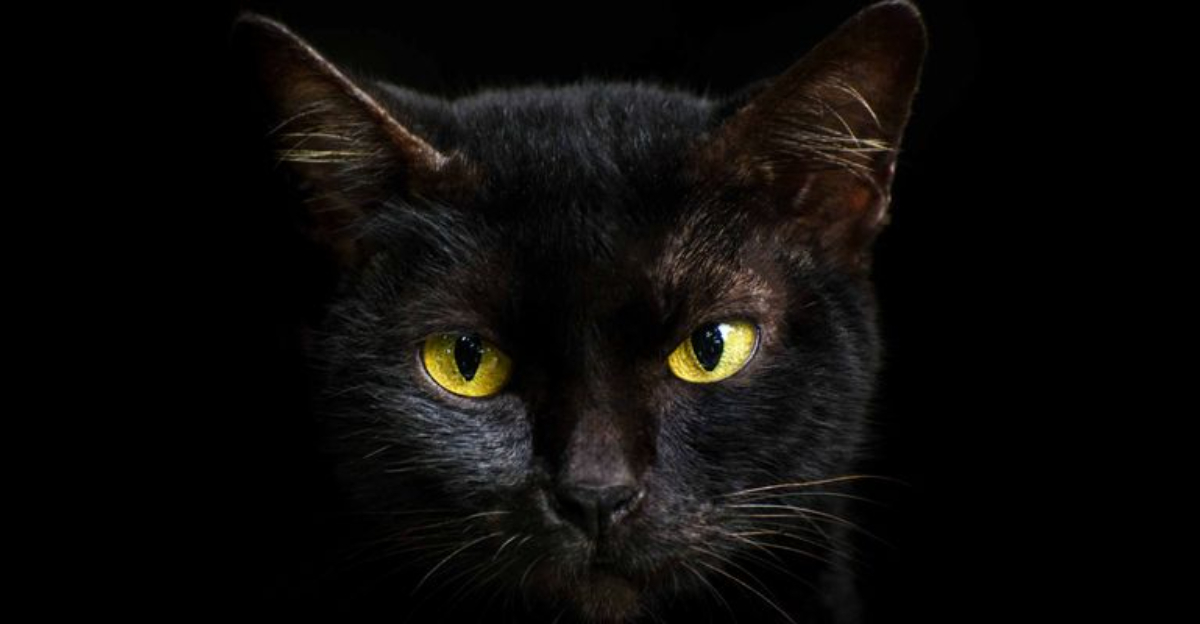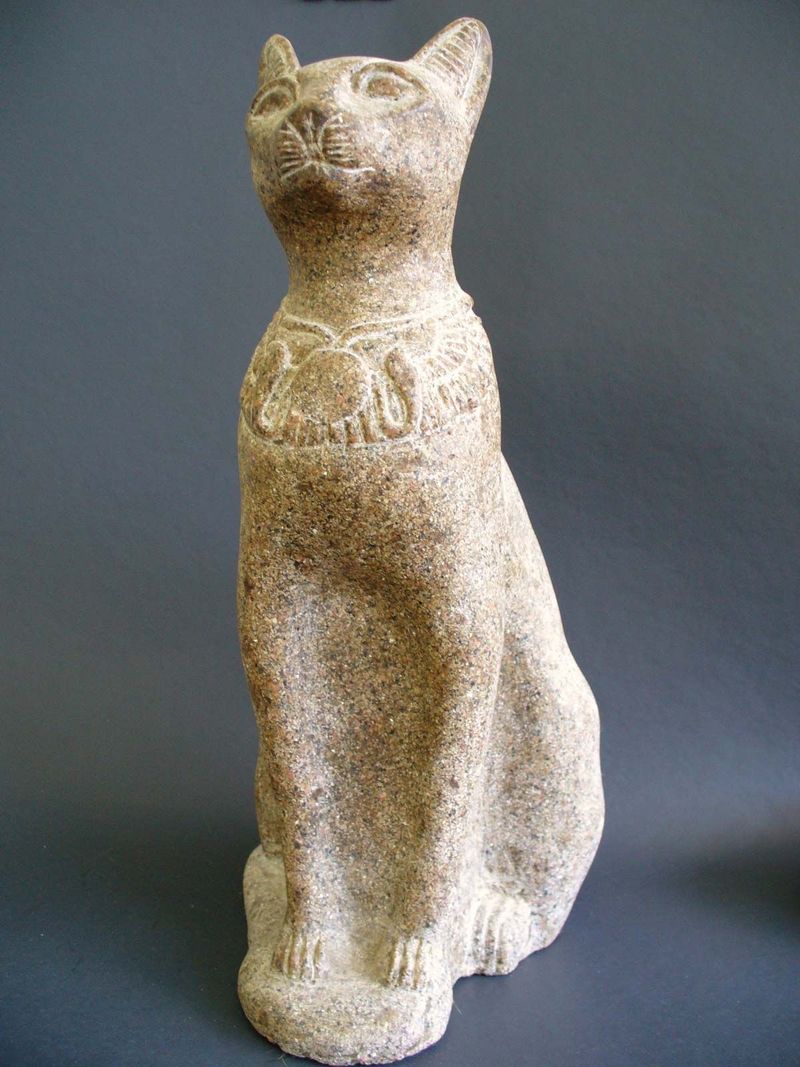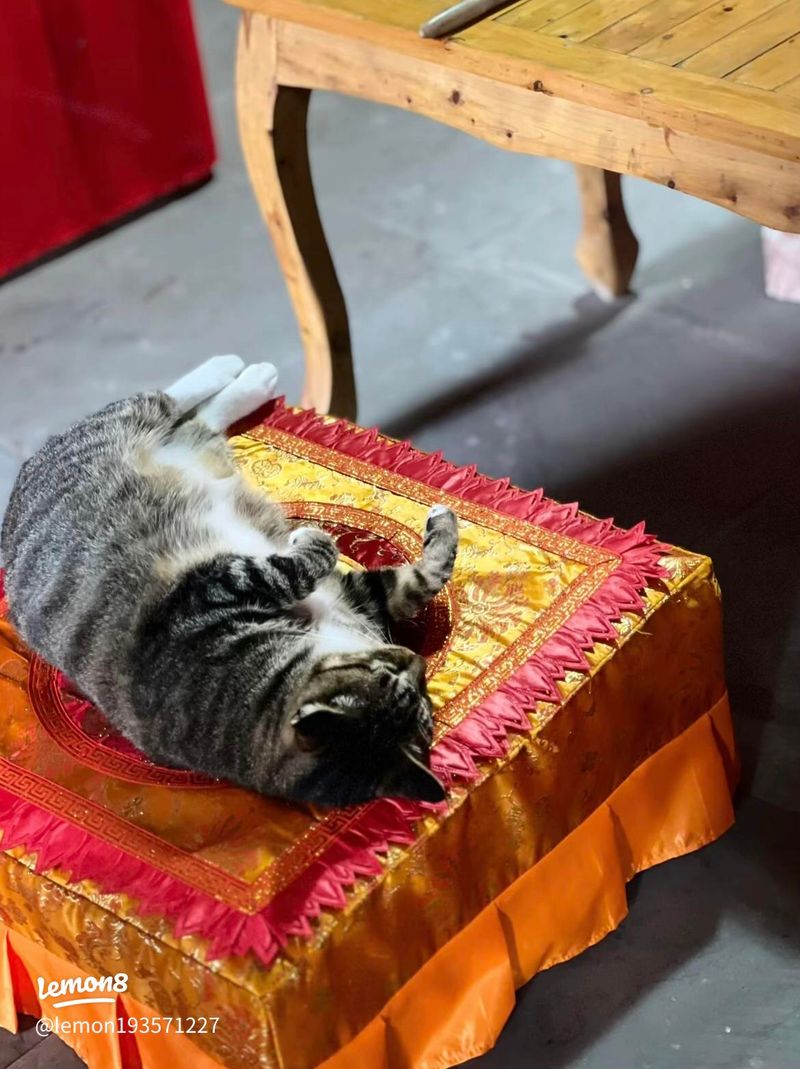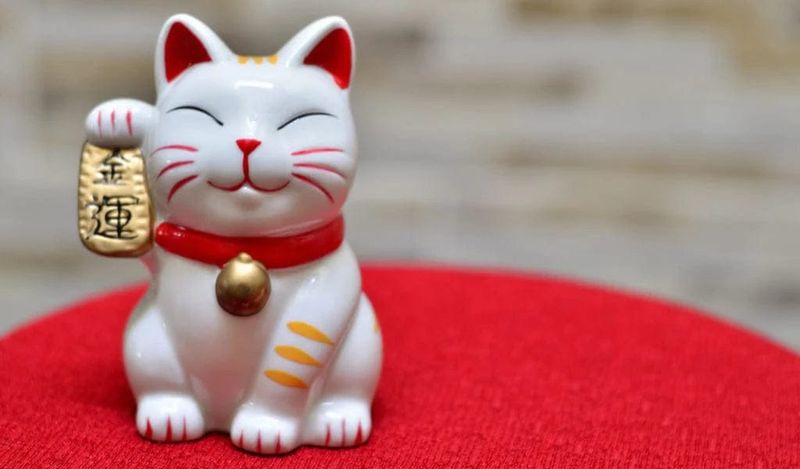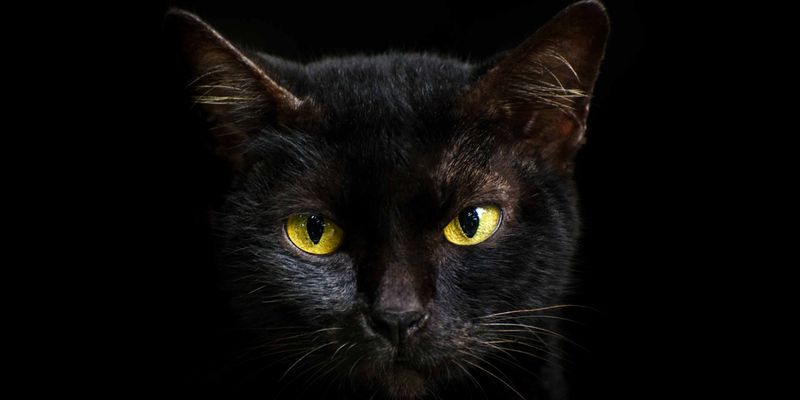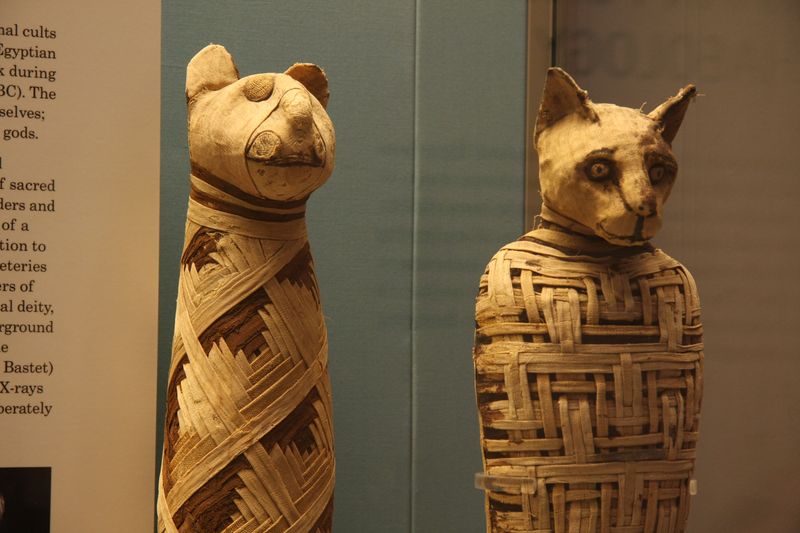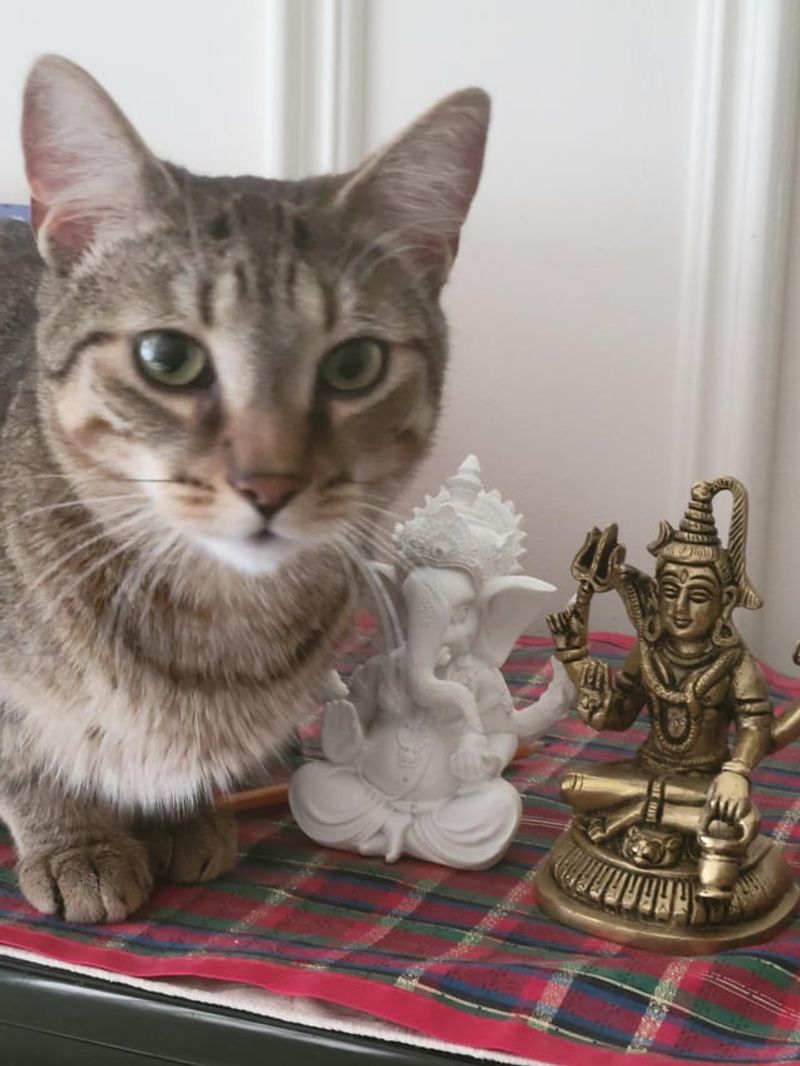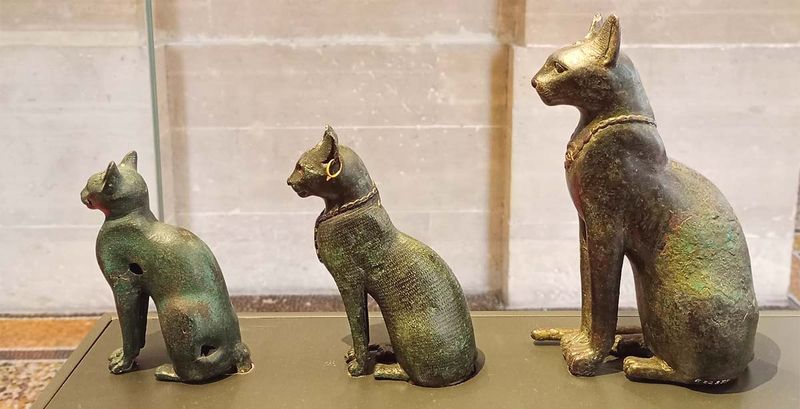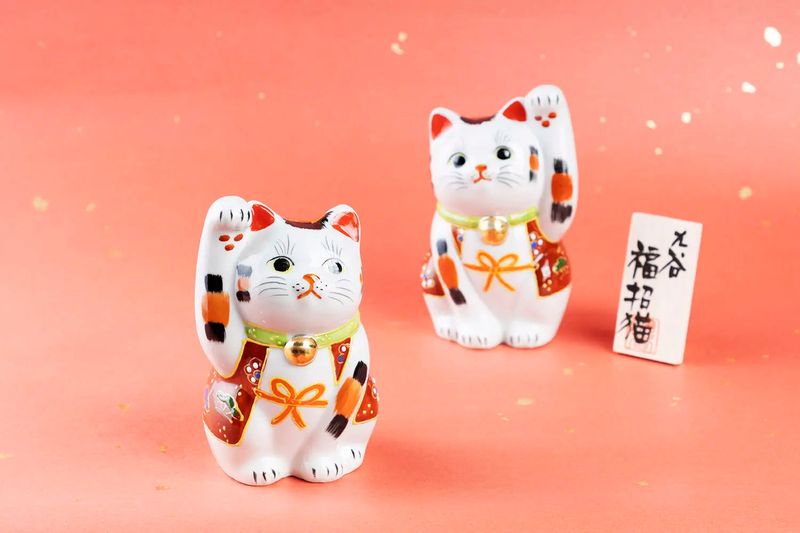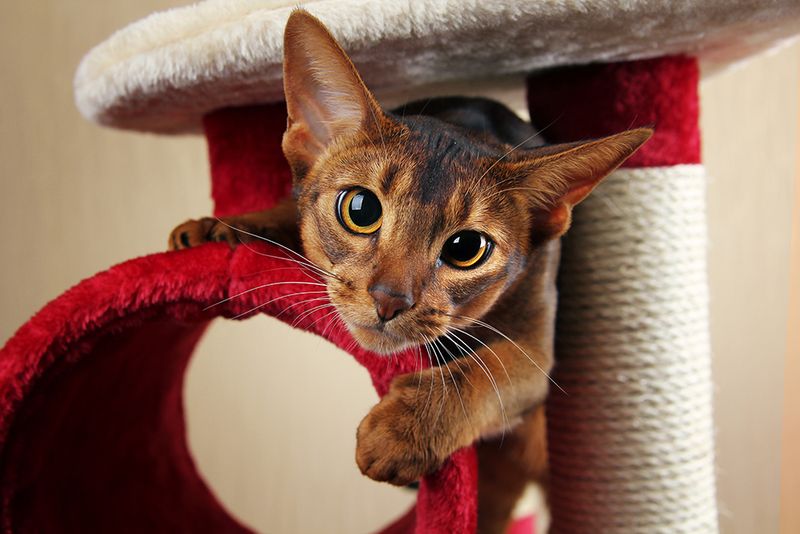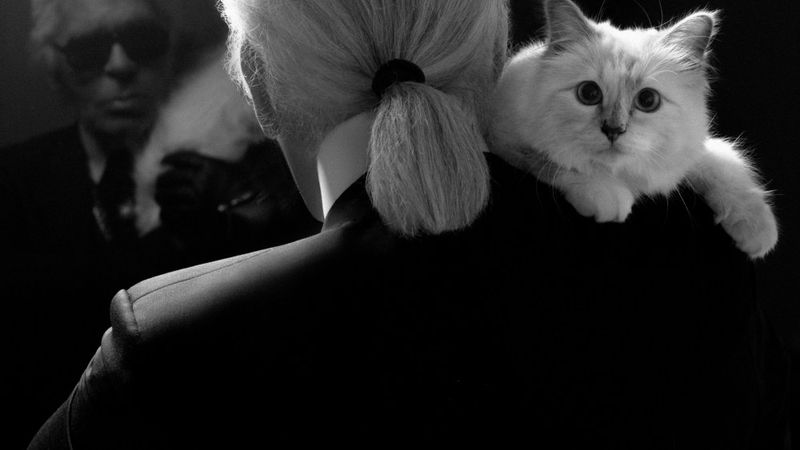📖 Table of Content:
- 1. Worshipped as Gods in Ancient Egypt
- 2. Guardians Against Evil Spirits
- 3. Symbols of Luck and Fortune
- 4. Linked to Witchcraft and Magic
- 5. Mummified and Buried With Honors
- 6. Associated with Reincarnation
- 7. Respected as Protectors of Grain and Food
- 1. Cats Are Still Symbols of Luck & Prosperity
- 2. Cats as Protectors of Home & Spirit
- 3. Cats as Independent Icons of Prestige & Power
Since the dawn of civilization, cats have prowled through our myths, homes, and imaginations—not merely as pets, but as divine, mystical, and revered beings. Across the world, ancient societies saw in these graceful creatures something beyond the physical: a spiritual depth, a protective power, or even a divine spark. Whether curled in a temple corner or stalking quietly through moonlit alleys, cats held a position unlike any other animal.
The reasons for their elevated status varied, from practical roles like rodent control to more abstract beliefs rooted in religion, magic, and superstition. In some places, they were worshipped outright as gods; in others, feared and respected for their connection to the supernatural. Yet, a common thread weaves through these traditions—a deep, abiding fascination with the feline form and spirit.
This article explores twelve extraordinary ways that our ancestors revered cats, illuminating the many roles they played in ancient beliefs, rituals, and daily life. From the deserts of Egypt to the mountains of Japan, and from spiritual realms to earthly survival, these stories remind us that long before the internet crowned cats as icons, humanity had already done so—centuries ago.
1. Worshipped as Gods in Ancient Egypt
In ancient Egypt, cats were not just admired—they were deified. The goddess Bastet, often depicted with the head of a lioness or domestic cat, symbolized protection, fertility, and the nurturing power of women. Households honored her by keeping cats, believing they brought favor from the divine. Egyptian laws protected cats fiercely; harming one could provoke a communal riot or even execution. Mourners would shave their eyebrows to signal grief over a feline’s death, a mourning ritual typically reserved for close human relatives. Artistic depictions in tombs and temples highlight their religious importance, where cats sit beside pharaohs as sacred companions. Through this lens, cats were not merely pets but bridges between mortals and gods.
2. Guardians Against Evil Spirits
Widely seen as mystical sentinels, cats were believed to repel evil spirits and dark energies. Many households, particularly in Asia and Eastern Europe, welcomed them not just for their company but for their supernatural shielding powers. Their ability to see in the dark gave rise to the belief that they could perceive unseen entities. People placed cats near cradles or altars, trusting them to keep misfortune at bay. Some cultures believed that cats could absorb negative energy or sickness from their humans. Even their purring was thought to create healing vibrations that calmed the soul. As guardians of the spiritual threshold, cats earned a place of trust and reverence.
3. Symbols of Luck and Fortune
In the realm of fortune, few symbols are as enduring as the cat, especially in Japanese tradition. The beloved Maneki-neko, or “beckoning cat,” with its raised paw, is believed to attract wealth, luck, and positive energy. These figurines adorn the entrances of shops, restaurants, and homes, acting as magical mascots of prosperity. Depending on which paw is raised, they may bring different forms of luck—wealth, relationships, or protection. Rooted in Edo-period folklore, one story tells of a cat saving a samurai by waving him away from a falling tree. Its gesture birthed centuries of belief in feline fortune-bringers. Over time, the cat’s image became an international charm for abundance and success.
4. Linked to Witchcraft and Magic
During medieval Europe’s dark times, cats became associated with witchcraft, particularly black cats, whose presence stoked both fear and fascination. Superstition ran deep, and many believed cats could transform into witches or act as their familiars—spiritual entities that assisted in magical workings. Inquisitors and fearful villagers viewed them as omens of misfortune or devilish influence. Ironically, this fear was an acknowledgment of the cats’ perceived mystical power. Their silent, knowing demeanor only added to the mythos. Despite persecution, secret reverence for cats persisted among those who saw them as wise and otherworldly. Thus, cats straddled the line between feared and revered—witches’ partners and magical beings in their own right.
5. Mummified and Buried With Honors
Few animals in human history have been granted funeral rites, but in ancient Egypt, cats were frequently mummified and interred with elaborate care. Archaeologists have unearthed entire feline necropolises filled with thousands of tiny sarcophagi. Owners believed their cats would protect them in the afterlife or accompany them on the spiritual journey. Some were buried alongside humans; others had tombs all to themselves. The process involved rituals, offerings, and inscriptions, echoing those reserved for people of status. These burials underscore the depth of spiritual connection Egyptians felt with cats. Death did not diminish a cat’s power—it elevated it.
6. Associated with Reincarnation
Across South Asian spiritual traditions, especially Hinduism and Buddhism, cats were seen as vehicles of reincarnated souls. Their tranquil demeanor and mysterious aura suggested a spiritual depth uncommon among animals. Some believed cats housed the spirits of monks or sages returning for another earthly life. In Buddhist temples, cats often roamed freely and were treated with quiet respect. Their introspective presence made them ideal symbols of detachment and reflection. Even today, in regions of Thailand and India, cats are treated with subtle spiritual reverence. Their nine lives metaphor may well be a nod to the cycles of rebirth.
7. Respected as Protectors of Grain and Food
In agrarian civilizations, survival depended heavily on food preservation, and cats earned reverence for safeguarding this precious resource. Ancient Egyptians, Chinese farmers, and European peasants all appreciated cats as efficient rodent hunters. Their practical role in preventing famine elevated them to more than just animals—they became community assets. In some places, offering cats food and shelter was seen as investing in the household’s prosperity. Shrines or tokens were sometimes placed in granaries to honor the cats’ contributions. This mutual relationship—human shelter in exchange for feline protection—was deeply respected. Cats weren’t just helpful; they were vital.
1. Cats Are Still Symbols of Luck & Prosperity
Across centuries, cultures like Japan, China, and parts of Europe have viewed cats as bearers of good fortune. The ancient belief that cats attract abundance lives on today—most famously through the Maneki-neko (“beckoning cat”) seen in shops and homes around the world. Even outside Japan, you’ll find lucky cat charms in keychains, apps, and décor, symbolizing prosperity. In some cultures, a cat walking into your house uninvited is still considered a sign of impending good luck. The tradition of associating cats with wealth and success remains strong, especially in business and home aesthetics. What began as spiritual reverence has become commercialized, yet no less culturally potent. Cats, even now, are quiet emblems of positive energy.
2. Cats as Protectors of Home & Spirit
In ancient times, cats were believed to ward off evil spirits and guard sacred spaces—and that belief has evolved but never vanished. Today, many people still believe that cats can sense bad energy, avoid “haunted” spots, or detect illness or emotional shifts. Cats are often said to “cleanse” the energy of a space by their mere presence. In spiritual and metaphysical circles, cats are considered energy guardians, and are even included in household protection rituals. People frequently share anecdotes of their cat staring at unseen things or acting as a buffer during emotional turmoil. That ancient sense of mysticism remains embedded in how we perceive their behavior. The idea of cats as protectors continues to be a deeply rooted belief in modern spiritual culture.
3. Cats as Independent Icons of Prestige & Power
Historically, cats were associated with royalty, wisdom, and elevated status—from Egyptian pharaohs to Chinese scholars. Fast forward to today, and cats still carry an aura of refinement, mystery, and elegance. Their independent nature is admired, even idealized, as the modern embodiment of boundaries, self-respect, and grace. On social media, cats are celebrated not just as cute pets but as symbols of personality and style, often elevated with “diva” or “regal” personas. Luxury brands, from fashion houses to perfume lines, frequently use cats in their imagery to evoke class and sophistication. In pop culture and advertising, cats still rule as sleek, poised figures. That ancestral association with elite status has transformed, but it has never disappeared.
